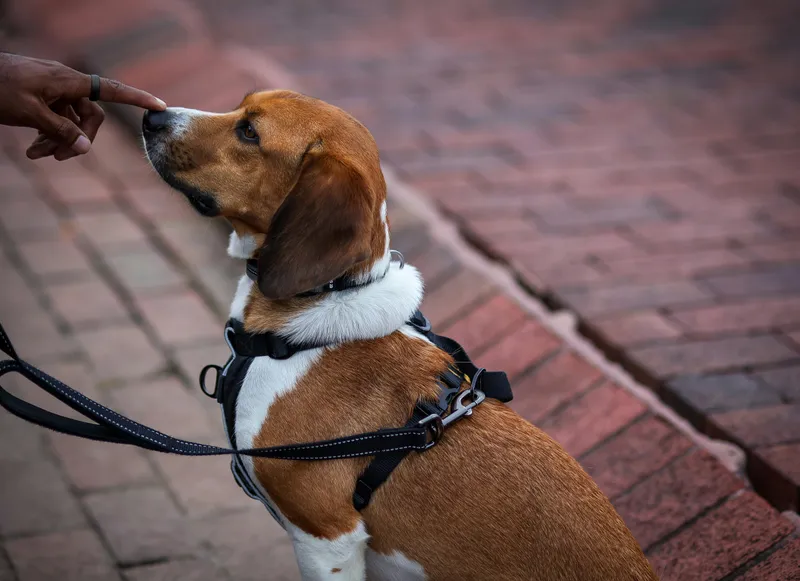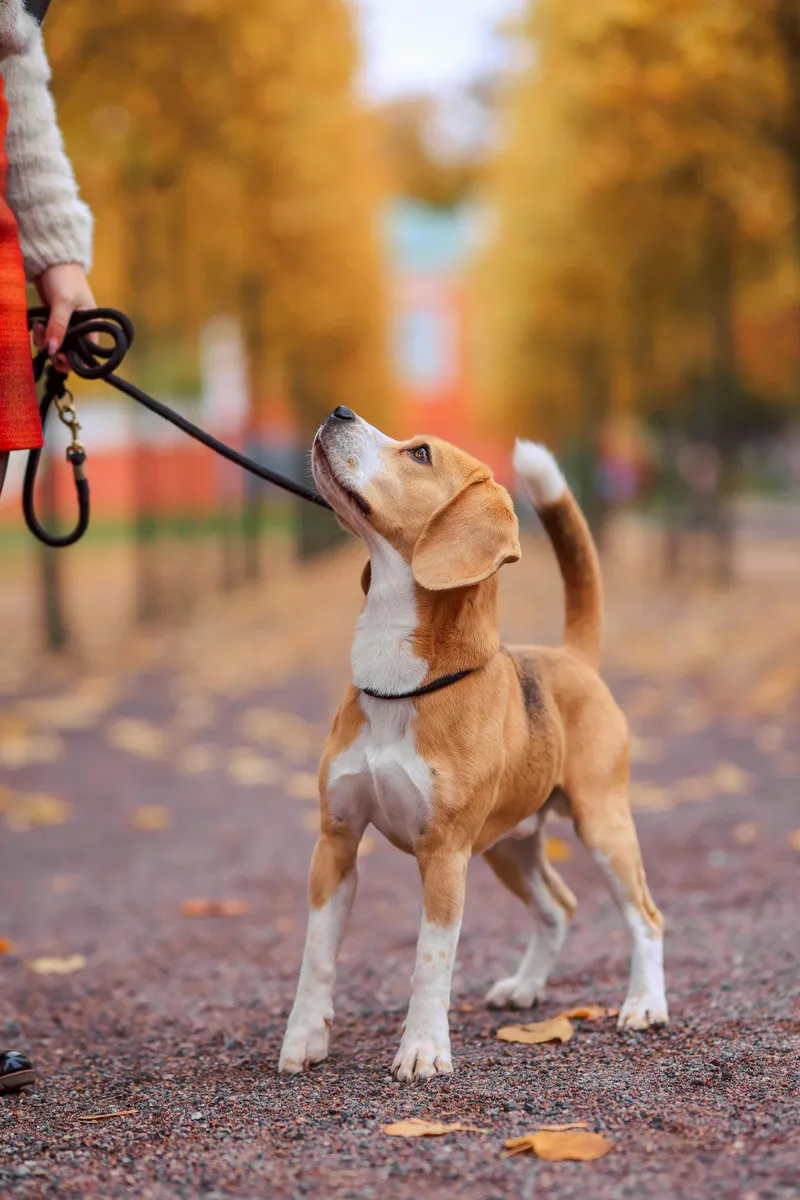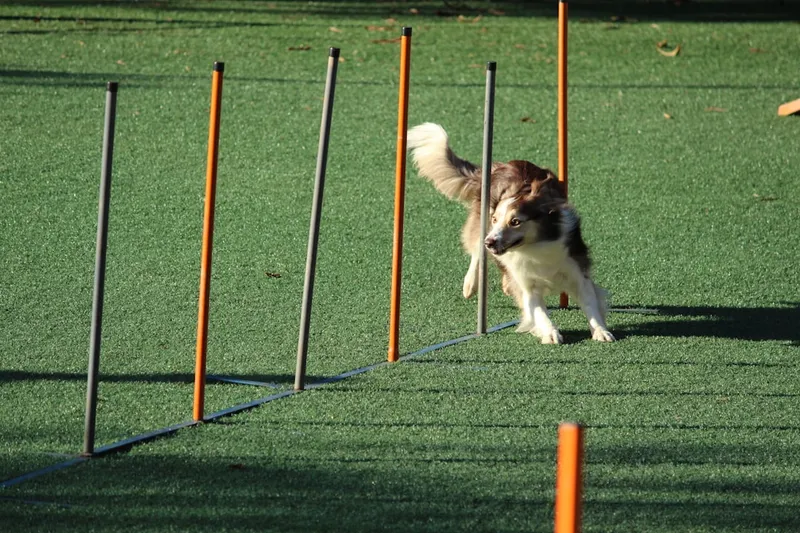The beagle is one of the most beloved dog breeds in the world, known for its cheerful character, curious personality, and incredible sense of smell. Originally from the United Kingdom, this medium-sized hound was originally bred for small game hunting, but today it is as valued as a family pet as it is for its specialized work functions.

Breed Traits & Characteristics
What is a Beagle?
The beagle is a medium-sized hound dog breed that stands out for its excellent sense of smell and sociable character. Traditionally used as a hunting dog, today it is also an ideal companion for many families.
Originally from the United Kingdom, the beagle was bred to track rabbits and hares, thanks to its acute sense of smell and perseverance. It belongs to Group 6 of the FCI (scent hounds and related breeds).

History of the Beagle
Origin and first historical records
Although its documented history begins in the British Middle Ages, hounds similar to the beagle were already described since ancient Greece. It is believed that its ancestors accompanied the Romans and subsequently evolved in England.
Development of the modern breed in the UK and USA
During the 18th and 19th centuries, British breeders standardized the modern beagle by crossing it with the Harrier and Foxhound. Shortly after, the breed was exported to the United States, where it acquired its own variants.
The era of Pocket Beagles
The “Pocket Beagles,” with barely 8 inches in height, were popular among English nobility during the 16th century, especially Queen Elizabeth I. Although these specimens became extinct, today some breeders attempt to recreate a miniature version, though it is not officially recognized.
Expansion and international popularity
Throughout the 20th century, the beagle gained worldwide popularity, especially in the United States, thanks to its versatility, ideal size, and friendly nature.
Physical characteristics of the Beagle
Size and morphology
The beagle is a medium-sized dog that measures between 13 and 16 inches at the withers and weighs between 20 and 30 pounds. It stands out for having long drooping ears, a strong and compact body, an erect tail with a white tip, and a straight muzzle that makes it easy to follow tracks.
Coat type and color
Its coat is short, dense and weather-resistant. The most common colors are tricolor (black, white and brown) and bicolor (white with brown or lemon). There are also mottled specimens.
Sense of smell
The beagle has one of the most powerful olfactory systems in the animal kingdom, only comparable to that of the bloodhound. This ability makes it an excellent tracking and detection dog.
Beagle varieties
English vs American Beagle
In general, the English beagle is more robust and heavy, while the American beagle tends to be lighter and more compact. Both share essential characteristics of the breed standard.
Pocket Beagle: reality or myth
Although “pocket beagles” existed historically, current versions are controversial. Some breeders have achieved smaller specimens through specific crosses, but these dogs may present more health problems.
Popular crosses — e.g. Puggle
One of the best-known crosses is the Puggle, a mix between beagle and pug. There are also combinations with cocker spaniel, dachshund or bulldog, which inherit the friendly character of the beagle.
Temperament and behavior
Personality
The beagle’s temperament is cheerful, affectionate and sociable. It usually gets along well with people and other animals, although it can be stubborn due to its independent hound instinct.
Coexistence with children and families
The beagle is an excellent dog for families with children. Its energy, playful attitude and tolerance make it ideal for active households. However, it usually doesn’t like prolonged solitude.
Intelligence level and training
It is an intelligent but stubborn dog. It learns quickly, but is easily distracted by smells. Beagle training requires patience, positive reinforcement and consistency from puppyhood.

Beagle health and care
Common diseases
Among the common health problems of the beagle are:
- Idiopathic epilepsy
- Hypothyroidism
- Ear infections
- Obesity
- Eye problems such as glaucoma or progressive retinal atrophy
Diet and exercise
It is important to control their diet and offer daily exercise. Long walks, tracking games and park visits are good for maintaining their weight and mental health.

Life expectancy
The beagle’s life expectancy is usually between 12 and 15 years, although some have exceeded 16 with good care.
Responsible breeding and specifications
It is recommended to acquire beagles only from responsible breeders who perform genetic tests. Ethical breeding helps prevent hereditary diseases and maintain breed standards.
Beagle as a working dog
Rabbit and hare hunting
Originally bred for small game hunting, beagles track and follow their prey with great persistence, especially hares and rabbits.
Detector dog in customs (Beagle Brigade)
In the U.S., beagles are part of the Beagle Brigade, responsible for detecting illegal food in airports. Their precise sense of smell and non-intimidating character make them ideal for this work.
Scientific research and controversy
Due to their docile temperament and manageable size, they have been used historically in laboratories for medical experimentation, which has generated ethical debate. Today the use of alternative models is promoted.
Other functions: therapy and rescue
Some beagles participate in animal-assisted therapy and search and rescue programs, providing emotional support and scent-based location in emergencies.
Beagle in popular culture
Snoopy and other famous characters
The most famous beagle is undoubtedly Snoopy, from the “Peanuts” comic strip. It also appears in advertisements, animated series and children’s books.
Movies and television
Beagles have starred in movies like “Shiloh” and have been endearing supporting characters in various family series and movies.
History of Darwin’s HMS Beagle
The HMS Beagle was the British ship where Charles Darwin made his famous voyage around the world. Although it is not named after the breed, it remains culturally linked to the name “Beagle.”